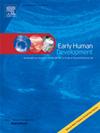Durations of first and second stage of labour and perinatal outcome
IF 2
3区 医学
Q2 OBSTETRICS & GYNECOLOGY
引用次数: 0
Abstract
Objective
To investigate the duration of active first and second stage of labour, specifically the new alert values recommended by the World Health Organisation in 2018, in relation to intrapartum stillbirths and 24-h newborn outcome (i.e. 24-h perinatal outcome).
Methods
A prospective observational study including deliveries at Haydom Lutheran Hospital in rural Tanzania between March 2013 through November 2018. Information about labour, delivery and newborn characteristics/outcome was recorded on data collection forms by trained data collectors, observing every delivery. Of 22,199 deliveries 12,481 were included. Exclusion criteria were: missing time variables, caesarean section, multiples and antepartum stillbirths. Logistic regression was used to model whether duration of labour was associated with risk of adverse outcome. Our main outcome measure was 24-h perinatal outcome.
Results
24-h postpartum, 454 (3.6 %) newborns were dead (intrapartum stillbirths n = 118, newborn deaths n = 63) or admitted to Neonatal Unit (n = 273). Duration of first stage was categorised: <6 (n = 900), 6- < 12 (n = 9204), and ≥ 12 h (n = 2377), with no significant relation to adverse perinatal outcome for either group (p = 0.431).
Duration of second stage was categorised: <1 (n = 12,342) and ≥ 1 h (n = 139). Duration ≥1 h was associated with adverse perinatal outcome, OR 3.38 (95 % CI 1.95–5.88) when adjusted for foetal heart rate during labour and before delivery, gestational age and birth weight.
Conclusions
Duration of first stage was not associated with adverse outcome. Second stage ≥1 h was associated with adverse outcome by more than a three-fold. Our findings are not in accordance with the new recommendations from the World Health Organisation.

第一和第二产程的持续时间和围产期结局
目的探讨产程第一和第二产程的持续时间,特别是2018年世界卫生组织推荐的新警戒值与产时死产和24小时新生儿结局(即24小时围产期结局)的关系。方法一项前瞻性观察研究,包括2013年3月至2018年11月在坦桑尼亚农村海多姆路德医院分娩的产妇。有关分娩、分娩和新生儿特征/结局的信息由训练有素的数据收集人员记录在数据收集表上,并观察每一次分娩。在22199次分娩中,有12481次分娩。排除标准为:缺失时间变量、剖宫产、多胎和产前死产。Logistic回归用于模拟分娩时间是否与不良后果风险相关。我们的主要结局指标是24小时围产期结局。结果产后24 h死亡新生儿454例(3.6%)(产时死产118例,新生儿死亡63例)或入住新生儿病房273例。第一阶段的持续时间分为:<;6 (n = 900), 6- <;12 (n = 9204)和≥12 h (n = 2377),两组的不良围产期结局均无显著相关性(p = 0.431)。第二阶段的持续时间分为:1 (n = 12,342)和≥1小时(n = 139)。持续时间≥1小时与不良围产期结局相关,经分娩时和分娩前胎儿心率、胎龄和出生体重调整后,OR为3.38 (95% CI 1.95-5.88)。结论第一阶段持续时间与不良预后无相关性。第二阶段≥1小时与不良结局相关的风险超过3倍。我们的发现与世界卫生组织的新建议不一致。
本文章由计算机程序翻译,如有差异,请以英文原文为准。
求助全文
约1分钟内获得全文
求助全文
来源期刊

Early human development
医学-妇产科学
CiteScore
4.40
自引率
4.00%
发文量
100
审稿时长
46 days
期刊介绍:
Established as an authoritative, highly cited voice on early human development, Early Human Development provides a unique opportunity for researchers and clinicians to bridge the communication gap between disciplines. Creating a forum for the productive exchange of ideas concerning early human growth and development, the journal publishes original research and clinical papers with particular emphasis on the continuum between fetal life and the perinatal period; aspects of postnatal growth influenced by early events; and the safeguarding of the quality of human survival.
The first comprehensive and interdisciplinary journal in this area of growing importance, Early Human Development offers pertinent contributions to the following subject areas:
Fetology; perinatology; pediatrics; growth and development; obstetrics; reproduction and fertility; epidemiology; behavioural sciences; nutrition and metabolism; teratology; neurology; brain biology; developmental psychology and screening.
 求助内容:
求助内容: 应助结果提醒方式:
应助结果提醒方式:


